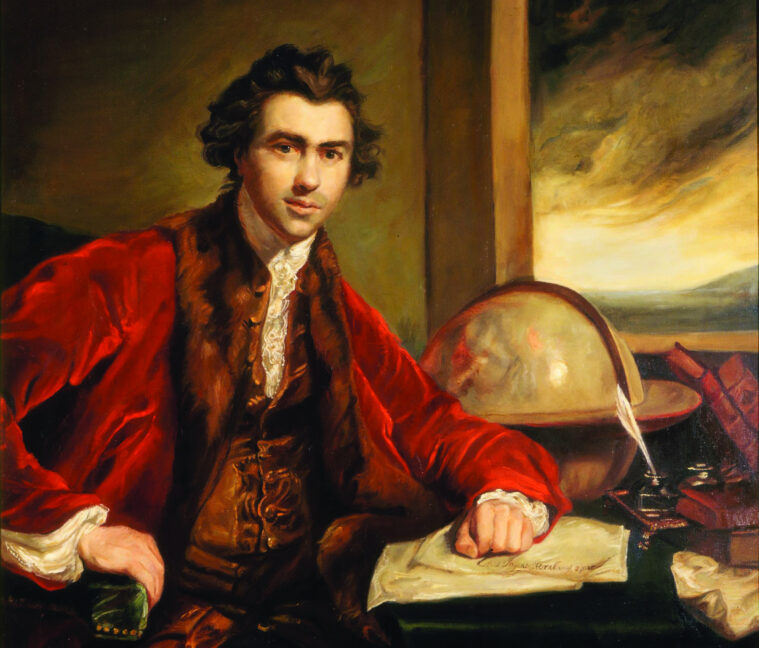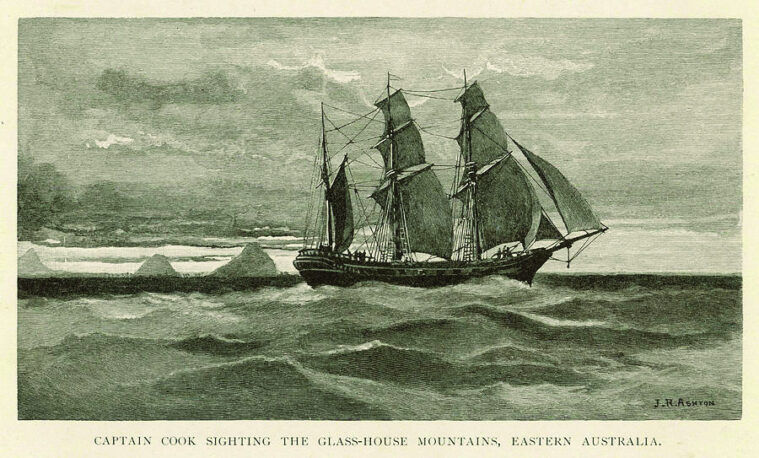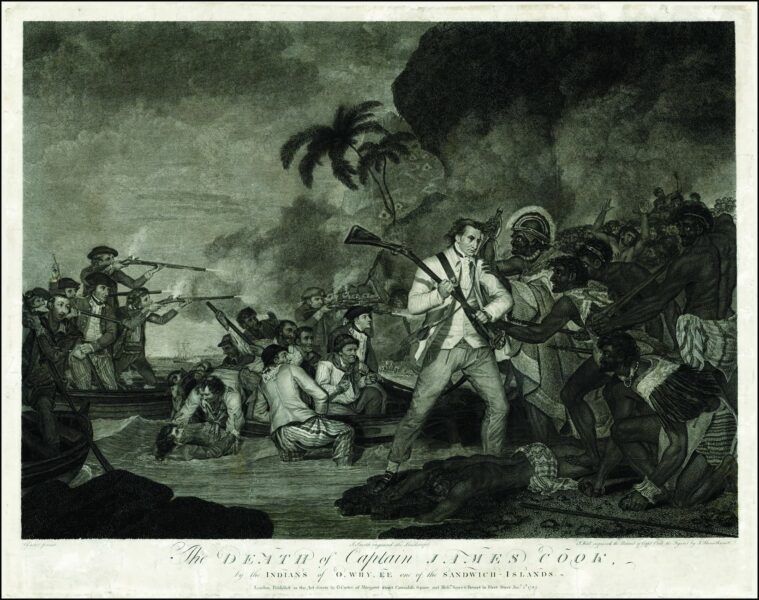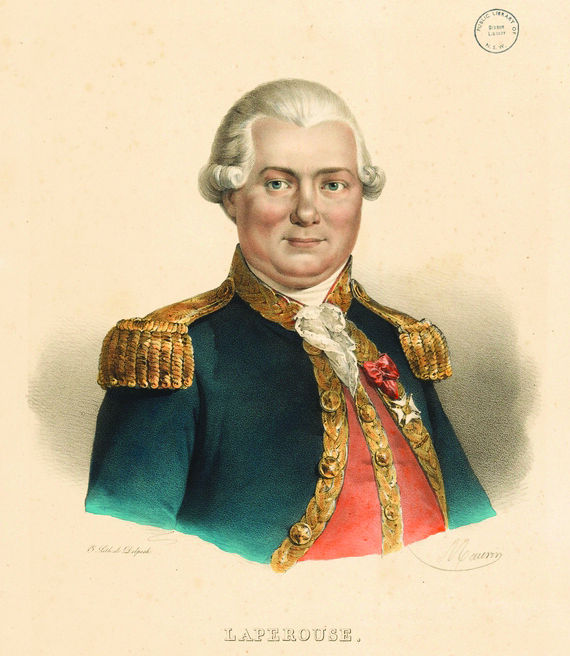With its mineral-rich volcanic soil, tropical temperatures and abundant rainfall, the Pacific paradise of Hawaii has the ideal conditions to grow some of the most stellar weed in the world. Iconic Hawaiian strains such as Puna Budder, Kauai Electric and of course, Maui Wowie, are considered the stuff of legend today. But exactly how and when marijuana first arrived on the isolated islands remains one of history’s little mysteries.
The first recorded reference to Cannabis in the Hawaiian Islands was published in the Honolulu newspaper Ka Nonanona in 1842, where it was referred to as “pakalolo.” Though probably meant as a derogatory term at the time, pakalolo – which roughly translates to “numbing tobacco” or “crazy weed” by some accounts – remains the name Hawaiians use for the herb to this day.
There’s no doubt that Cannabis had been in Hawaii long before 1842 … but how it first arrived there is unclear. Some claim the original Polynesian settlers (who had previously migrated from Asia) brought it with them when they first sailed to the islands as early as the fourth or fifth century, but there doesn’t seem to be any proof of that. Others claim that Cannabis may have been brought there by the Mexican cowboys (known as vaqueros or paniolos) who came to Hawaii to work on King Kamehameha’s cattle ranches starting around 1793, or by sailors on whaling ships around 1820. While either of those groups may have brought Cannabis with them, there’s no evidence that they were actually the first. Rather, the most plausible explanation, according to my research, is that Cannabis was introduced to Hawaii by the first European explorers who visited the archipelago in the late 18th century – thanks to a hemp-loving horticulturalist named Joseph Banks.

SIR JOSEPH BANKS
Sir Joseph Banks was the head botanist for the British Empire and an adviser to King George III. He also happened to be a well-established Cannabis enthusiast who encouraged the monarchy to grow hemp for practical and strategic purposes (essential to use for sails and ropes for the Navy’s ships and to make parchment for writing letters and documents) and urged the King to underwrite voyages of discovery to new regions of the globe, so that he could collect and study samples of any new flora and fauna they discovered.
In 1766, the 23-year-old Banks was elected to the Royal Society and embarked on his first sea voyage, which took him to Newfoundland and Labrador. Then two years later in 1768, he was appointed to a scientific expedition to the South Pacific aboard the Royal Naval ship HMS Endeavor, commanded by 39-year-old Captain James Cook. Later dubbed “the man who mapped the world,” Cook had been commissioned by the British Admiralty to sail to the Pacific Ocean to record the transit of Venus across the Sun – an astrological phenomenon that, if correctly observed and recorded, could help determine the distance of the Earth from the Sun.
On both of these voyages, Banks brought with him an array of various seeds with which to trade (at that time, seeds could be used as a sort of universal currency), and this extensive seed bank undoubtedly included several varieties of Cannabis.
During his three-year journey aboard the Endeavor, Banks visited Brazil, Tahiti, New Zealand and the eastern shores of Australia, where he collected over 30,000 plant specimens and named over 1,400 new species. In fact, Australia’s Botany Bay is so named because of “the great quantity of plants Mr. Banks … found in this place.” When Banks returned home to London in 1771, he became an instant celebrity in the scientific community.

CAPTAIN COOK IN HAWAII
Banks had planned to accompany Cook on a second voyage to the Pacific in 1778, but was denied permission to sail by the Admiralty after a fierce disagreement about the lodgings, provisions and equipment he required for the journey. It was on that expedition aboard the HMS Resolution that Cook would “discover” the Hawaiian Islands (which he called the Sandwich Islands).
In 1779, the Resolution made landfall at Kealakekua Bay on the Big Island, where the Brits first made contact with the Natives. Upon their arrival, Cook was perceived as a divine emissary of the Polynesian god Lono, whose festival the Hawaiians happened to be celebrating when the ship arrived. Because of this, Cook’s initial interactions with the inhabitants were overwhelmingly positive – so much so that he and his crew remained on the island, trading and interacting with the Hawaiians peacefully for nearly a month. Unfortunately, Cook later ran afoul of the Natives after attempting to kidnap their king, Kalaniʻōpuʻu, in a dispute over a stolen cutter boat and was stabbed to death.

Banks may not have been on board that expedition to Hawaii, but his seeds almost certainly were. He was still the Crown’s horticultural advisor and was known to require that a wide variety of seeds be brought along on all voyages – including Cannabis, which the Brits would’ve wanted to plant on the islands so they’d have hemp crops waiting for them upon their next visit.
BOTANY BAY
Though Banks never returned to the Pacific, he continued to advise the Crown regarding policy there for decades to come. It was allegedly Banks who convinced the British Government to colonize Australia and turn Botany Bay into a penal colony – later earning him the honorific “the Father of Australia.”
In 1788, Banks reportedly gifted a bag of hemp seeds to the First Fleet before they set out to find the penal colony. A letter he received from the East India Company in 1801 provides evidence that his bags of hemp seeds were still being handed out in the Australian colonies 13 years later. Throughout that time, Banks continued to exercise his influence over the colony’s governors to expand hemp production there. In fact, many scholars believe that the growing of hemp was the primary purpose of the New South Wales settlement and that shipping the convicts there was merely a cover to deceive Britain’s rivals.

OTHER EXPLORERS
Even if, for whatever reason, Banks’ Cannabis seeds didn’t make it onto the islands during Captain Cook’s visit, they could just as easily have been brought by one of the other European explorers who began trading with the Hawaiians in the years that followed. The two next most likely candidates would be Frenchman Jean François de Galaup, comte de Lapérouse (or simply Lapérouse), who became the first European to set foot on the island of Maui in 1786, and British Naval Captain George Vancouver, who visited both Australia and the Hawaiian Islands in 1792.
Regardless of the exact year it arrived or by whose hand, it seems abundantly clear that Joseph Banks was the true progenitor of pakalolo in the Pacific.
CANNABIS CODA
It should be noted that Mr. Banks continued to evangelize for Cannabis for the remainder of his life and that his interest in the plant was in no way limited to its industrial uses. In addition to the sativa variety commonly used for hemp fiber, he apparently acquired some of the more exotic indica varietals from British sailors who’d traveled to India and came to enjoy their medicinal and recreational benefits. It was eventually revealed through his personal letters that Banks even began receiving shipments of hashish from a British consul in Tangiers named James Matra, some of which he began supplying to Romantic Poet Samuel Taylor Coleridge and others – making him England’s first de facto hash smuggler and weed dealer.
It’s even rumored that one of the strains Banks sent to the Pacific eventually evolved into one of Hawaii’s most famous landrace strains, Hawaiian Duckfoot.










